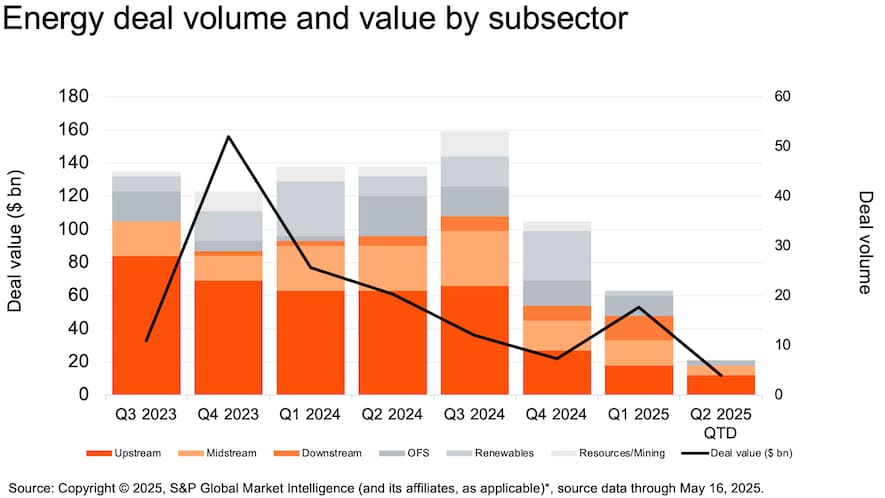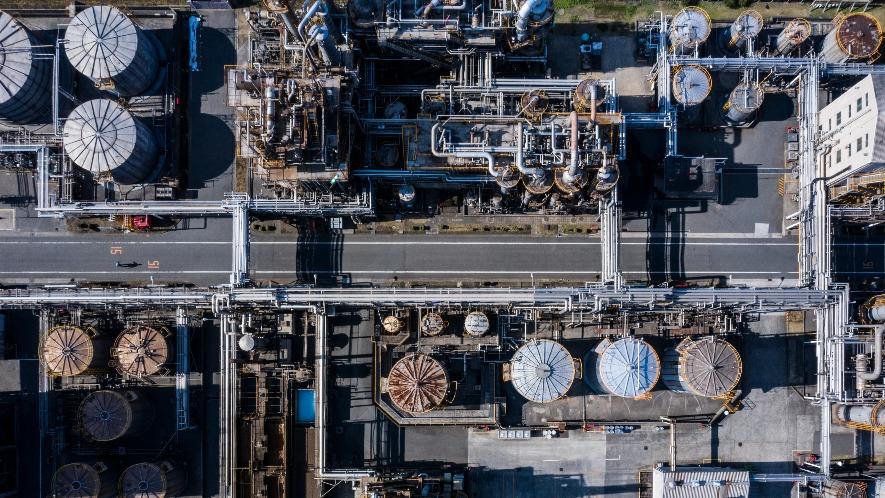

Energy industry trends and strategies focusing on shifting regulatory landscapes, technological advancements and fluctuating supply-demand conditions.
The oil and gas sector is undergoing a strategic reset, with consolidation extending from upstream into midstream and oilfield services. After a wave of large-scale upstream deals, 2025 so far has seen a shift toward mid-cap and infrastructure-focused transactions aimed at achieving scale, unlocking synergies and easing logistical constraints. Deals in the Permian and Haynesville basins have increasingly included infrastructure carve-outs and bundled gathering assets, highlighting the growing emphasis on midstream efficiency.
On the policy front, the new administration has reopened LNG permitting and eased compliance timelines, signaling support for traditional energy. However, new tariffs and geopolitical uncertainty are adding complexity to both US and cross-border investment and demand planning.
Key deal themes emerging in 2025 include:

Note: The source used in the 2025 midyear outlook is S&P Global Market Intelligence.

In 2025, natural gas continues to play a central role in both US energy strategy and global supply dynamics. The Biden-era pause on LNG export permits has been lifted under the Trump administration, clearing the path for project approvals and signaling renewed federal backing for LNG and natural gas infrastructure. This policy reversal, combined with rising energy needs from AI, data centers and global industrial demand — is fueling a resurgence in gas-focused M&A, particularly around LNG terminals, pipeline assets and lower-cost upstream portfolios. US natural gas production is holding near record levels, while exports are projected to rise significantly in 2025. At the same time, the regulatory environment remains fluid, with shifting trade policies and tariff actions creating new risks for cross-border deals. Even so, natural gas is firmly reasserting itself as both a geopolitical asset and a growth engine, with capital increasingly flowing to firms positioned to meet this accelerating demand.
In a volatile and policy-shifting environment, companies should double down on capital discipline while positioning for long-term shifts tied to AI-driven energy demand and nuclear momentum. Strategic M&A remains vital for scaling in shale and midstream, while divesting non-core assets can unlock capital for growth. With investor focus on energy security and cash flow, firms should reassess exposure and pursue selective entry into transition technologies. Agility and financial strength will be critical through the remainder of 2025.
“With new demand drivers like AI and data infrastructure continuing to accelerate, traditional energy players with strategic assets, well-capitalized balance sheets and strong execution track records are well positioned to lead the next wave of investment.”
Tracy Herrmann,PwC’s Global and US EU&R Deals LeaderThe mid-2025 deal environment reflects a market in transition under a more interventionist US administration. While pro-business in tone, new tariffs and regulatory shifts have added uncertainty for cross-border and transition-focused deals. Oil and gas companies continue consolidating to optimize core acreage and extend drilling programs, but commodity volatility is pressuring valuations. As the year progresses, disciplined execution and adaptability to shifting political and regulatory dynamics will be critical for capturing value in a complex market.
1. Source: U.S. Energy Information Administration


Energy industry trends and strategies focusing on shifting regulatory landscapes, technological advancements and fluctuating supply-demand conditions.


Resurgence and recalibration: power and utilities M&A heats up amid shifting policy and demand pressures.


While the real economy seems to remain somewhat resilient, the Federal Reserve has adopted a wait-and-see approach.


Discover how PwC helped GE split into three industry-leading companies, fueling bold innovation, global efficiency, new growth possibilities and deals transformation.